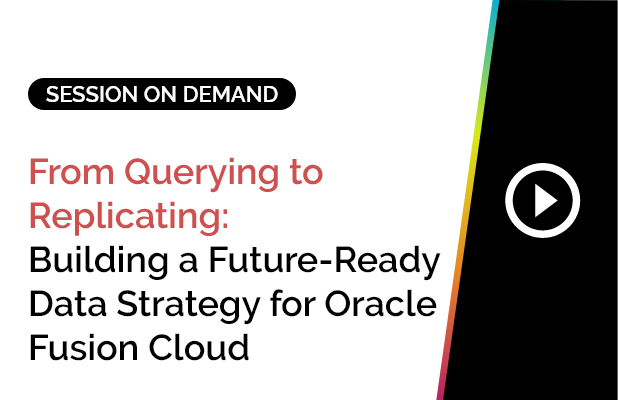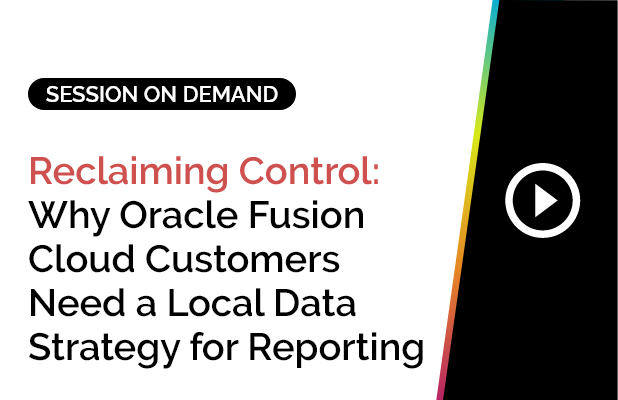Diversity & Inclusion (D&I) is a topic that has come to forefront recently due to its impact on the organization’s image both outside & within the organization. Companies are publicly making statements supporting movements promoting diversity, for example, hiring females with a career break to improve male female ratio.
A survey by Lever indicated that 50% organizations agreed that D&I initiatives will become more of a priority because of the pandemic and in proactively combating racism at the workplace. By reflecting diversity in the customer base, organizations are demonstrating innovation & outperforming their competitors. Diverse teams can better represent the customers they serve, make decisions with fewer blind spots, and bring more varied and innovative thinking to problem solving. Additionally, this is an area where leadership can display the human side of the business and re-enforce the trust of their employees.
What does Workplace Diversity & Inclusion really mean?
Workplace Diversity is the range of differences within a company or workforce, particularly related to the categories of gender, race, ethnicity, age, and sexual orientation. Workplace inclusion is the act of ensuring that all people, regardless of identity, have the same rights and opportunities within the organization.
While Diversity is measureable through well-known diversity metrics such as male-female ratio, percentage of females in leadership etc., all aspects of inclusion cannot be measured. We can determine inclusion through inequality in salary, employment & advancement opportunities in diverse candidates. However, employee experience in the organization cannot be quantified. Elements of the employee experience, such as whether or not they feel heard, experience a sense of belonging, and are able to express themselves safely in the workplace cannot be accurately measured.
Why is Diversity & Inclusion Important?
Let’s see, at what levels can diversity & inclusion effect a company:
- Companies are facing financial loss and backlash for unfulfilled diversity promises. From Facebook in 2020 to Oracle to Micron in 2021, being the latest addition in the list of companies paying millions of dollars to settle discrimination suits. In 2013, Bank of America Merrill Lynch settled a race discrimination suit for $160 million. Cases like these brought Merrill’s total 15-year payout to nearly half a billion dollars. These claims not only tarnish company’s reputation but also result to drop in share price and possibly even claims alleging securities fraud.
- The pandemic has widened the gender disparity gap and has especially affected women. A survey from McKinsey showed that the pandemic had a near-immediate effect on women’s employment specifically working mothers, women in senior management positions, and Black women. One in four women are considering leaving the workforce or downshifting their careers versus one in five men. D&I are both critical for business recovery, resilience & re-imagination. On the flip side, if action is taken now to achieve best-in-region gender-parity improvements by 2030, $13 trillion could be added to global GDP compared with the gender-regressive scenario.
- Customers are increasingly making decisions in all spheres on the basis of organization’s reputation. Nearly two-thirds of consumers (64%) are at least somewhat likely to purchase a product immediately after seeing it advertised if the brand embodies diversity and inclusion. People support brands they can relate to in terms of values, contribution to society and commitment to customers. Brands that invest in diverse, inclusive, and socially conscious marketing strategies are able to build stronger relationships with their consumer base,
In short, diverse environments are the building blocks for broad thinking and innovation. Inclusive cultures invite an array of ideas and foster a safe environment where employees can bring their best selves to work.
Why has the Progress in Improving D&I so Elusive?
Driving culture in HR has always been an uphill battle. Changes meant to address diversity have additional challenges.
- The change has to be driven from the top-down i.e. from the leadership. As straightforward as it may sound, it requires change in the thought process of the executive level, which is essentially predominated by males. Accepting & including someone new (race/gender/ethnicity/nationality) is often difficult and requires change in mindset, which is challenging to achieve.
- Perception of the problem is out of alignment from reality. D & I is a complex, nuanced and sensitive topic and companies often struggle to know where to begin. Due to this, companies find it challenging to identify & create policies that could actually make a difference.
- Companies are trying to prevent lawsuits by now requiring new hires to sign arbitration contracts agreeing not to join class actions. Firms are increasing diversity training to reduce bias on the job, hiring tests and performance ratings to limit it in recruitment and promotions, and grievance systems to give employees a way to challenge managers. These tools are designed to preempt lawsuits by policing manager’s thoughts and actions. However, this proves counter-productive as people often rebel against rules to assert their autonomy.
Although it is clear that diversity & inclusion is a top value or priority, companies are rarely genuinely passionate about improving their workplace. Almost entirely, their motivation to improve their diversity metrics is driven by regulations compliance.
How can People Analytics help to build a data-driven D&I strategy?
Employees today want their organizations to take an active role in addressing social and cultural issues—in and out of the workplace. When we think about diversity, we often think about common factors such as gender or race. However, there are many facets of diversity, which are less visible and can cause indiscrimination. Here are few facets of diversity, which need to be addressed by an organization:
- Gender
- Race/Ethnicity
- Sexual orientation
- Age
- Educational Background
- Native language/Nationality
- Physical abilities/Disability
- Veteran status
Way Forward? – Build a Diverse Workforce
Organizations can improve diversity by aligning their diversity goals with talent acquisition. Attracting and increasing diverse talent is an important competitive differentiator for recruiters and talent acquisition leaders to develop.
Here are 10 tips you can take to improve diversity & Inclusion through recruitment:
Tip 1: Resume screening using Artificial Intelligence (AI)
Legacy applicant tracking systems (ATS) are not built to source and hire diverse candidates. An AI-enabled applicant tracking system can drive diversity, equity, and inclusion in the hiring process. Automated resume screening uses the existing resume database to learn about employee’s experience, education, and other characteristics and applies this knowledge to new applicants in order to rate, rank, and shortlist the strongest candidates, with reduced unconscious biases. You can scale your recruiting and communication efforts using text recruiting and recruiting chatbots.
Tip 2: Blind Resumes & Interviews
Anonymize/Hide the applicant details like name, gender etc. from recruitment specialist to prevent unconscious bias. This reduces the possibility of making assumptions about the candidate based on these factors. Extend the concept of blind resume to blind interviews by removing personal identifying information from applications and getting candidates to anonymously answer job-related questions. Although, this is difficult to achieve but you setting up interview protocols like scorecards, minimum interview time, recording & reviewing selected interviews can help weed out bias & favoritism.
Tip 3: Use sourcing methods that contain more diverse candidate pipelines
Explore advertising channels that can help you reach diverse talent. Start by analyzing your existing channels and identify which channel gives candidates closely matching the specified criteria. If you want to make sure your advertising is reaching a broad demographic, consider channels like social media.
Tip 4: Job description should be inclusive.
Make sure the content on your job description represents inclusion. Refrain from using gender-coded words that can discourage applicants from submitting their candidature. Preferably, use sex-neutral language and emphasize on duties and responsibilities. For example, using masculine-type words like “ambitious” and “dominate” were less appealing to female applicants.
Tip 5: Showcase acceptance & encouragement to cultural-diversity
Encourage different language speaking people to apply by offering career website & communications in those languages. Include photos or videos from the team or organization to highlight diversity and acceptance of varying nationalities. Another way is to create a unique, media-rich page of your company advertising your culture, leadership, and employees.
Tip 6: Take steps to counter unconscious bias
Ensure that the description of job requirement should not exclude someone with disability. Mentioning physical demands that are not critical to the job, could automatically exclude someone with a disability from the hiring process.
Tip 7: Widen your diversity range beyond known factors
If you want to specifically market people with disabilities, include a statement about your company’s commitment to equal employment opportunity. Also, train and prepare the staff to handle inquiries and applications from people with disabilities.
Tip 8: Make veterans a part of your diversity plans
Attract and hire military veterans by focusing on transferable skills and experiences. Additionally, create recruiting campaigns designed specifically for veterans and active service members transiting to civilian life.
Tip 9: Strategically prepare a pipeline with more diverse candidates
Rather than passively waiting for a diverse candidate pool to come to you, proactively source talent from underrepresented groups. The premise here is that minority groups have sufficient representation into the top of the recruitment funnel to increase their likelihood of selection.
Intentionally seeding the shortlist with a proportionate number of diverse candidates levels the playing field when it comes to choosing one to hire.
Tip 10: Offer workplace policies that are more appealing to diverse candidates
Millennials prefer companies that respect & promote work-life balance. Offering flexibility such as work from home options and flexible hours not only helps you attract more diverse candidates, it helps prevent expensive employee turnover.
Final Thoughts
Now more than ever, people are selecting companies they want to work for (and buy from) with their heart and conscience. Candidates are choosing to seek out employers that value diversity because they believe in these values. It is imperative to include diversity & inclusion in the work culture to hire & retain talent. To reap the benefits of a diverse workforce, employers must ensure that they are able to achieve collaboration within their team. Follow your data closely to make informed decisions, and continue making progress on your organization’s diversity, equity, and inclusion. At the end of the day, diversity recruiting is all about hiring the best person, irrespective of their background.

Kapil Kapur
Kapil is Director, Business Transformation with SplashBI’s Client Success practice. He is passionate about using data and analytics to drive business decisions, orchestrating technical architecture & governance models, and delivering the best customer experience. Kapil has over two decades of experience guiding customers in their digital transformation journeys and helping them achieve their business objectives. An admitted sports fanatic, he feeds his addiction to football by watching Seattle Seahawks games on Sunday afternoons. You can find Kapil on LinkedIn and Twitter.


![Incorporate Diversity & Inclusion through Recruitment [10 Tips] 1 people analytics whitepaper](https://b1005447.smushcdn.com/1005447/wp-content/uploads/2021/10/3-game-chaning-metrics-whitepaper.jpg?lossy=0&strip=1&webp=1)
![Incorporate Diversity & Inclusion through Recruitment [10 Tips] 2 Incorporate Diversity & Inclusion through Recruitment [10 Tips] 4](https://b1005447.smushcdn.com/1005447/wp-content/uploads/2021/10/SplashHR-main-banner-CTA.jpg?lossy=0&strip=1&webp=1)











